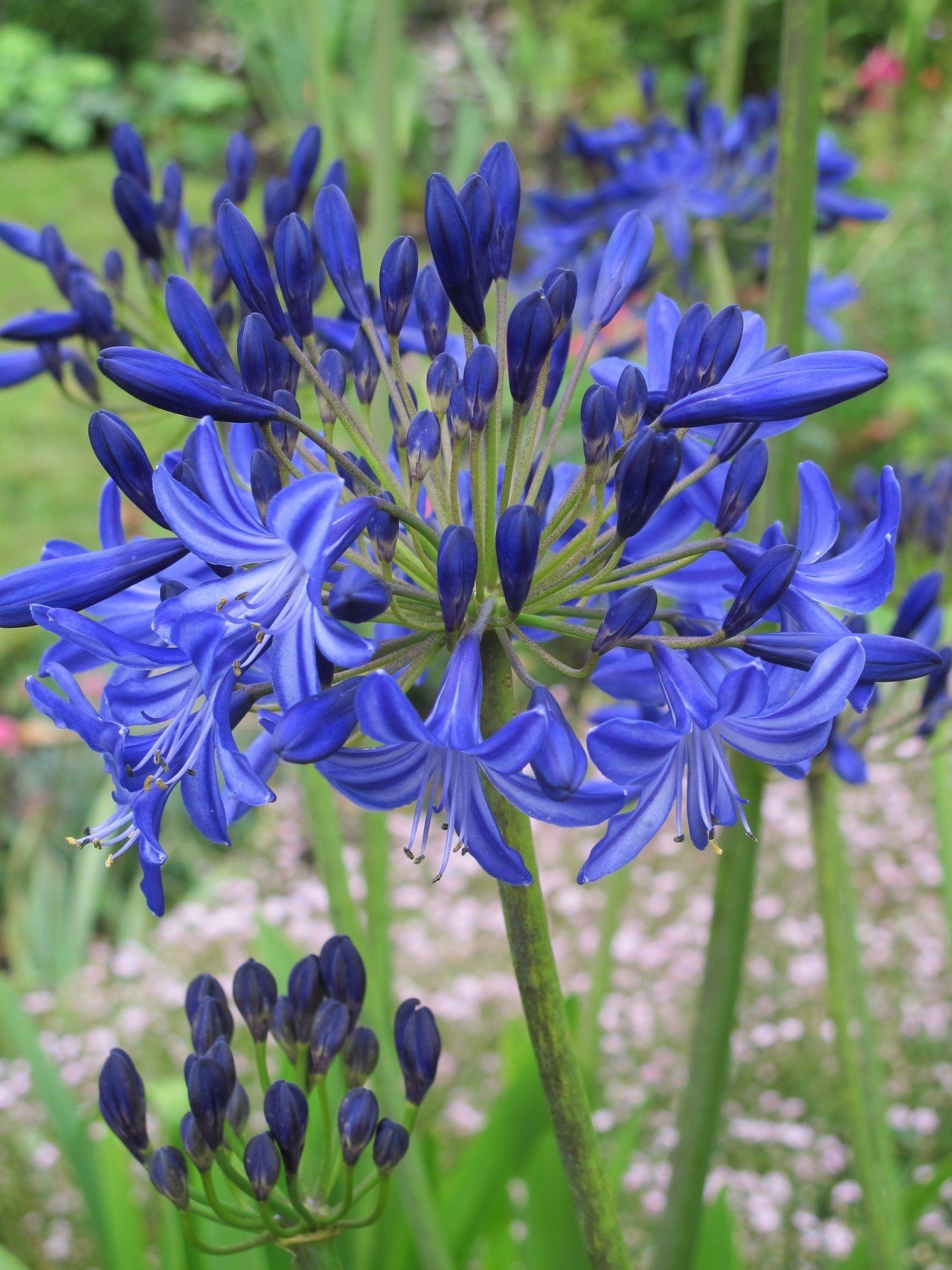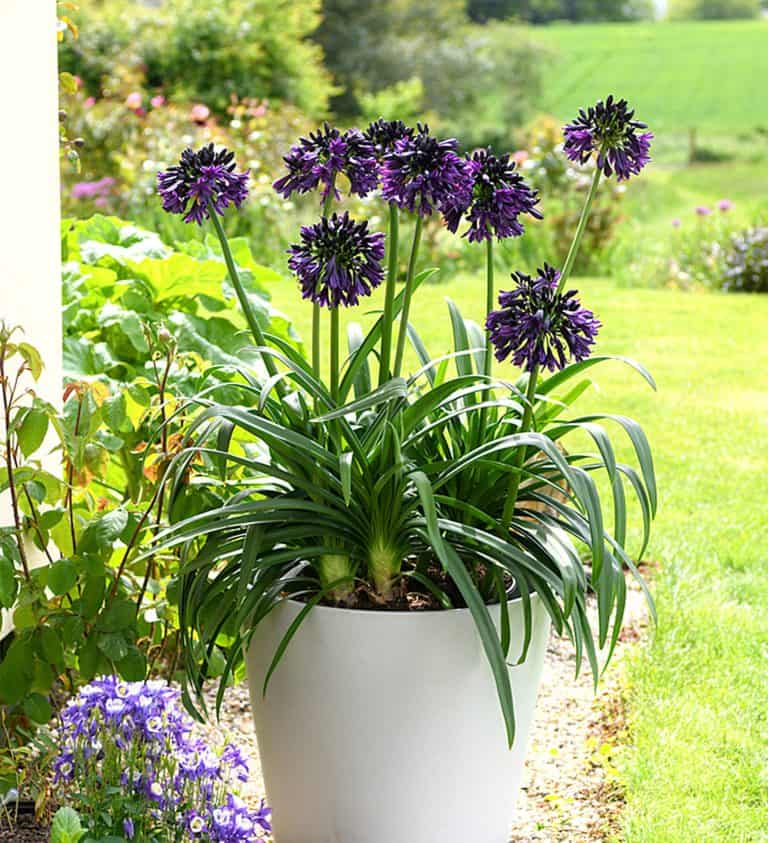Agapanthus Expanding Conditions: Dirt, Sunlight, and Watering
Agapanthus Expanding Conditions: Dirt, Sunlight, and Watering
Blog Article
Mastering the Art of Agapanthus Care: Important Actions for Healthy Growth and Vibrant Flowers
In the world of horticulture, the cultivation of agapanthus stands as a fulfilling venture for those who look for to support these sophisticated flowering plants. From selecting the right range to mastering trimming strategies, the journey towards growing flourishing agapanthus plants is multifaceted and holds the essential to unlocking the complete capacity of these herb gems.

Choosing the Right Agapanthus Range

When selecting the right Agapanthus variety for your garden, consider factors such as climate viability, blossom shade, and development practice. In addition, think about the climate in your area to ensure the Agapanthus selection you pick can prosper in your particular problems. Comprehending the growth practice of different Agapanthus selections is vital for proper placement within your garden.
Perfect Growing Conditions
Thinking about the ideal ecological needs is vital for effective Agapanthus growing. Agapanthus plants are sensitive to cool temperature levels and should be safeguarded from frost throughout winter season months.
To ensure healthy growth and lively flowers, plant Agapanthus light bulbs at a depth of about 2-4 inches and area them 8-12 inches apart. Mulching around the base of the plants assists maintain moisture and subdues weed growth.
Watering and Feeding Tips
Preserving appropriate wetness levels and giving essential nutrients are crucial elements in the care routine for Agapanthus plants. When it pertains to watering Agapanthus, it is vital to strike a balance. These plants favor regularly moist soil yet are prone to root rot if overwatered. During the expanding period, water deeply once a week, guaranteeing the soil is well-draining to stop waterlogging. In hotter climates or throughout durations of dry spell, more frequent watering may be required to maintain the soil evenly damp. Nevertheless, reduce watering in the winter months to avoid water logged problems.
Fertilizing Agapanthus is crucial for promoting healthy growth and prolific blooms. Use a well balanced fertilizer, such as a 10-10-10 formula, in the very early springtime as new development emerges. Repeat this application every 6-8 weeks throughout the expanding season. Avoid too much fertilizing, as it can cause rich vegetation at the cost of blossoms. Always adhere to the producer's instructions for proper dilution and application methods. By adhering to these watering and feeding pointers, you can guarantee your Agapanthus plants prosper and produce dynamic, useful site resilient flowers.
Pruning Techniques for Agapanthus
Trimming Agapanthus plants at the suitable times and with correct techniques is crucial for keeping their health and wellness and advertising optimal growth and blooming. The suitable time to trim Agapanthus is in late wintertime or very early spring prior to new growth arises. Start by removing any dead or yellowing leaves near the base of the plant. Cut them as short as possible without harming the emerging shoots.
For flowered stems, wait till the flowers have actually perished and then trim them back to the base. This not just cleans the plant's appearance but additionally urges the advancement of new blossom buds. Deadheading invested flowers can also reroute the plant's power into generating more blossoms as opposed to setting seeds. Nonetheless, if you intend to collect seeds for breeding, leave some flowers to completely dry and fully grown on the plant.
Bear in mind to use clean, sharp tools to make exact cuts and lower the risk of presenting conditions. Agapanthus. Normal trimming will assist keep your Agapanthus looking healthy and balanced and cool while guaranteeing an abundant display screen of beautiful blooms
Dealing With Typical Bugs and Illness
After guaranteeing appropriate trimming strategies for Agapanthus, it is crucial to deal with usual bugs and diseases that can impact the health and vigor of these plants. One typical pest that impacts Agapanthus is the Agapanthus gall midget.
Additionally, Agapanthus plants can suffer from origin rot if click resources they are planted in improperly draining dirt. By being watchful and taking punctual activity against insects and illness, you can help your Agapanthus plants prosper and create dynamic flowers. Agapanthus.

Conclusion
In final thought, understanding the art of agapanthus treatment involves selecting the ideal selection, offering optimal growing conditions, appropriate watering and feeding, proper pruning methods, and dealing with common insects and conditions. By following these necessary actions, you can make sure healthy development and lively blooms for your agapanthus plants. Keep in mind to consistently keep track of and keep your plants to promote their general health and longevity.
To ensure healthy development and lively check my source flowers, plant Agapanthus bulbs at a deepness of regarding 2-4 inches and area them 8-12 inches apart. By complying with these watering and fertilizing tips, you can guarantee your Agapanthus plants thrive and produce vivid, resilient blooms.
One common parasite that influences Agapanthus is the Agapanthus gall midget. Additionally, Agapanthus plants can endure from root rot if they are planted in inadequately draining pipes soil. By adhering to these important actions, you can make sure healthy development and lively flowers for your agapanthus plants.
Report this page